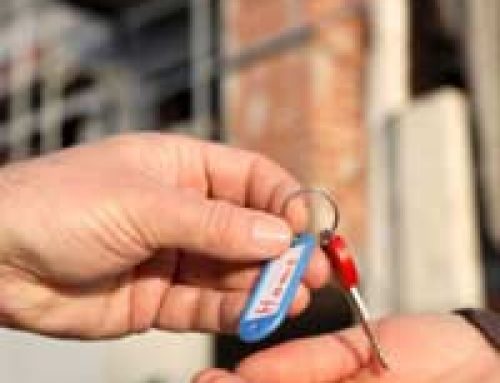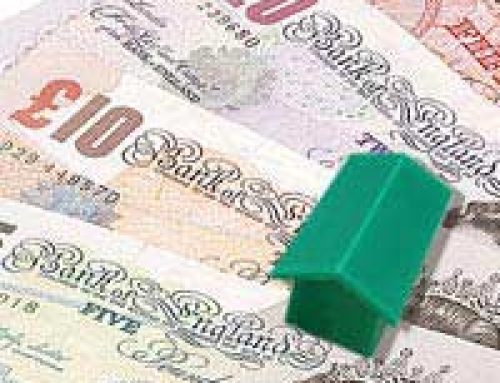
‘As safe as houses’ is a reassuring phrase and one which, even despite the recent recessionary wobbles and the credit crunch, conveys the comfort of a solid investment – unless, it sometimes seems, those houses are made from unconventional materials.
“The first thing to point out about non-traditional forms of housing,” says Council of Mortgage Lenders (CML) Press Officer, Julian Wadley, ” is that lenders will base their lending decision on the individual valuation of the property. The most important aspect is that the dwelling holds its value in the medium to long term as suitable security for the loan.”
According to the CML, the UK probably contains more types of non-traditional construction than almost any other nation on the planet – and that number is growing. So, amid the stories of mortgage difficulties and declined insurance proposals circulating in wood and straw construction circles, just how does the financial services industry view non standard buildings?
Contents
Mortgage security
Unsurprisingly, in these days of slow housing markets, depressed prices and reduced money supply, which has seen buyers of even conventional homes finding mortgages in general hard to come by, the would-be owner of a straw or flat pack house faces a significant challenge.
“When looking at any security, all lenders will want to be sure of its value and saleability,” says David House, Head of Property Risk for Santander UK. “With new build, lenders will want to see that there has been some form of supervision of the construction and that a warranty exists in case there are any problems in the early years after construction (typically 10). Where a property is not part of a wider development then some lenders will accept supervision by a competent person, such as an architect, in which case they are relying on their professional qualifications and expertise.”
Even so, all securities are valued, relying upon the advice of RICS registered valuers to provide that valuation. He says that sometimes although a suitable warranty is available, it may be that the valuer advises that a property will not be readily saleable in the open market or, if it is, that the value of the property is less than our customer’s own view.
“So, for a property to be deemed acceptable security we require one of the warranties mentioned in the CML lenders handbook and for a valuer to advise us that the property will be readily saleable in the open market at a figure that supports the lending required.”
House says that all lenders are similar in this respect, although there are slight variations in their specific requirements.
Self-build mortgages
A number of companies have at times offered self-build mortgage products which might potentially be of interest, including the Ecology Building Society, HBOS, HSBC, Norwich & Peterborough Building Society (part of the Yorkshire Building Society group) and Skipton Building Society. Eligibility conditions apply, of course, the deals on offer change frequently, and today with the majority of lenders focusing their activities on the known risk of ‘normal’ housing, even those who are prepared to finance self-builds are reticent about pushing the envelope too far.
A spokesperson for Norwich & Peterborough Building Society (N&P) said: “N&P does not usually lend on properties built from the non standard materials specified but we do offer self-build and conversion mortgages and we welcome applications from people wishing to buy an unusual property to live in. N&P has been in this market for more than 20 years and we have helped many customers build their own home or convert an existing property. Some of the latter have been unconventional buildings such as a barn or churches.
“Our self-build/conversion mortgages do have certain criteria that need to be met – ranging from the type of build, their own personal characteristics (i.e. age/income) and the financing of the project. Most of this information can be found on the N&P website.”
“In broad terms, rates for self-build mortgages are higher than standard residential mortgages, which reflects the additional costs a lender faces (i.e. administration, particularly given the stage payments) and the increased risk of providing funding for a home that is yet to be built.”
A sympathetic ear
There is, however, some good news; if ever you might expect a sympathetic ear, you’d hope you would find one at the aptly named Ecology Building Society – and you’d be right. Jon Lee, Ecology’s Business Development Manager says that they view traditional “low impact” building materials such as straw bale sympathetically, and subject to the sustainability of materials and designs, they can also lend on kit houses too.
“Special conditions tend to be pretty bespoke to the project rather than to the materials,” he says. “There are instances where our security requirements include taking collateral warranties over designs and the actual build contract if the project is particularly unusual and it is hard to see how it may be completed without the expertise of the intended borrowers or their professional advisors.”
He warns that self builders generally need to be aware that lenders will scrutinise their cash-flow very closely, and that time spent understanding at what points funding will be required to pay suppliers, labour costs and so on is critically important.
“Our advice is to talk to a few lenders directly with self build experience. Brokers can of course assist, but at Ecology our preference is very much to deal direct with the client. If this isn’t possible and you are having to explain a straw bale project to a call centre, then you probably have the wrong lender in mind!”
Sadly, the ripples of sub-prime mortgages and the shock wave they sent through the industry back in 2007/2008, are still very much with us. The harsh truth is, if you want to build in wood or straw, unless you’re very, very lucky, you’re almost certainly going to have to finance it yourself; it seems these so-called ‘non standard’ homes, clearly don’t attract anything much resembling ‘standard’ lending.
Self-build insurance
Assuming you have found a way to deal with that particular hurdle, then you’re all set to get started on the build, and that swiftly brings you to issue of insurance. It has often been said that you can insure anything against anything – if you’re prepared to pay for it – and when it comes to self-building, there’s certainly no shortage of things to pay for.
According to recently retired construction project manager, Ian Bell, some of the things you might need to consider include:
- Structural Warranty
- Public Liability
- Site Risk
- Tool and Materials Cover
- Income Protection
He recommends getting good guidance from a qualified professional, to make sure you end up with the right mix of policies for your own particular needs and circumstances.
“It’s the same story for any self-build,” he says. “It doesn’t matter if it’s bricks or bales – get yourself some proper advice.”
Brokering insurance
Unfortunately, however, the material of the build often, does make a difference when it comes to actually obtaining that cover. Ian Crowder, Public Relations Manager for AA Insurance and Financial Services says, “the AA is a broker and I have checked what our panel is likely to offer for sustainable build homes or as they are known in the trade, ‘non standard’.”
“Different insurers have different criteria but most would decline non-standard homes, largely because they would find it difficult to rate the risk. AA will cover thatch, timber built homes and cob, but unconventionally built homes would be referred for underwriting.”
Ecology’s Jon Lee agrees. “Insurance can be more difficult to obtain. We do not have our own insurance arm, but refer clients to a sympathetic insurer, ‘Insure Green’, who do have a positive approach to insuring traditional or modular constructed properties.”
The insurers’ perspective
A spokesperson for the Association of British Insurers (ABI) explains the industry’s perspective.
“Insurers are very concerned about some modern methods of construction, particularly timber frame construction. Claims experience suggests that fire spread is much quicker with these constructions. They also tend to generate extremely high temperatures which means that the fire can spread to adjacent buildings and cause further damage.”
“Arson is a major cause of these fires and insurers are where possible, requiring developers to include risk management measures such as manned security and high fences to reduce the risk of arson. Some insurers are unwilling to insure individual timber frame constructions that are not part of a portfolio of properties. These risks are not uninsurable, but insurers will seek to charge what they think is the correct premium for the risk, which will be higher than more traditional building types, or impose certain terms and conditions such as a higher excess, and risk management requirements on the customer.”
“Insurers are also concerned about the potential spread of fire even in completed buildings and remain concerned about whether fire safety measures may be compromised by occupiers. Once completed, the owner may not know if the building is timber frame as it may have a brick facade and, therefore, they may not tell their insurer that the building is timber frame.”
According to the ABI, losses from fire cost the UK insurance industry between £1bn-1.3bn per year. “Much more consideration is needed to better understand the fire performance of Modern Methods of Construction (MMC) building types and how to reduce the risks associated with them,” their spokesperson says. “We also need to consider how these buildings can be more easily identified by the Fire and Rescue Service, the insurance industry and others.”
The good news
There is some good news on that score, as Santander’s David House explains.
“A few of the major lenders have been involved in the BOPAS project recently – the build off site property appraisal scheme for innovative construction. This provides a risk management process for evaluating the durability of materials and provides latent defects insurance for properties built from new technologies.”
If this project, and others like it, go according to plan, they should ultimately help provide mortgage lenders and insurance companies with a much clearer understanding of the risks of ‘non standard’ houses – and that should only make things easier for future generations of wood or bale builders. Unfortunately, that still lies some way in the future; for the moment at least, the finance and insurances challenges largely remain – but things are gradually changing.
As the saying goes, Rome wasn’t built in a day!





Looking for mortgage for straw bale extension build.